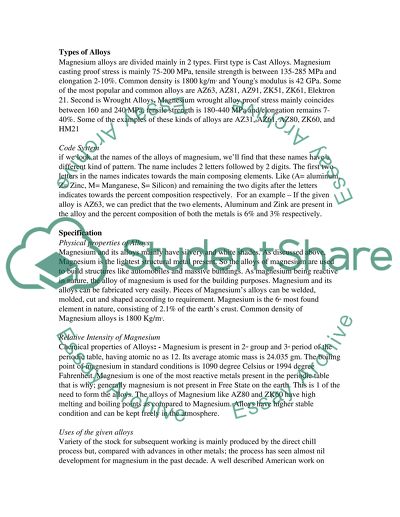Cite this document
(“Magnesium alloys - AK80 and ZK60 Essay Example | Topics and Well Written Essays - 2750 words”, n.d.)
Retrieved from https://studentshare.org/environmental-studies/1417703-magnesium-alloys
Retrieved from https://studentshare.org/environmental-studies/1417703-magnesium-alloys
(Magnesium Alloys - AK80 and ZK60 Essay Example | Topics and Well Written Essays - 2750 Words)
https://studentshare.org/environmental-studies/1417703-magnesium-alloys.
https://studentshare.org/environmental-studies/1417703-magnesium-alloys.
“Magnesium Alloys - AK80 and ZK60 Essay Example | Topics and Well Written Essays - 2750 Words”, n.d. https://studentshare.org/environmental-studies/1417703-magnesium-alloys.


